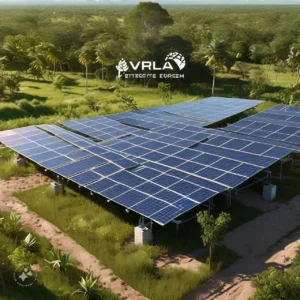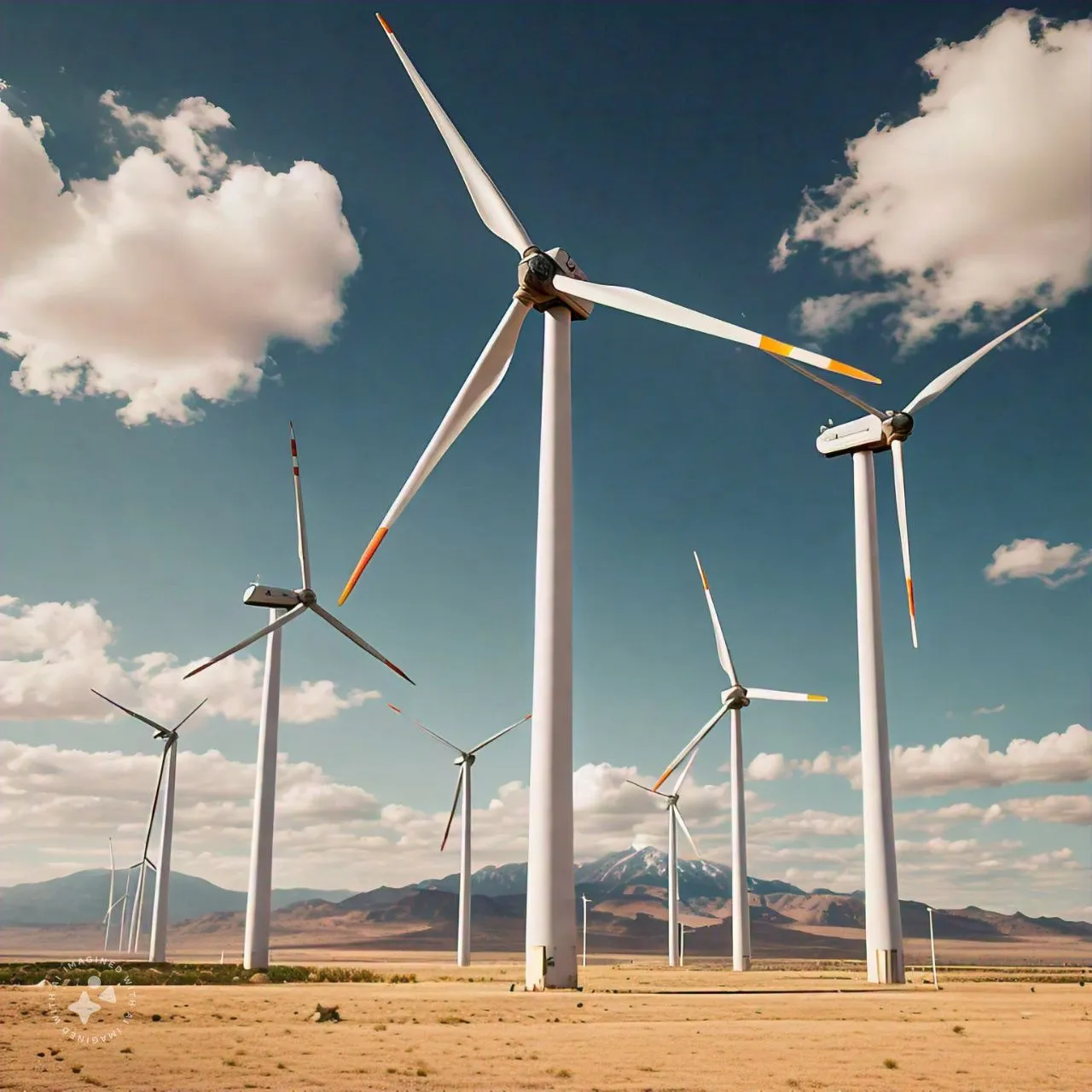Introduction
The advance of clean energy technology has increasingly emerged as one of the leading engines for economic prosperity and environmental stewardship in generations ahead. The problem is the focus of ever-increasing attention with world leaders, industry and local communities being required to address its mounting challenges in regard to climate change and energy security as fundamental drivers for sustainable development. The following touches on how these technologies are determining the future pointing out what is happening in this day and age & advancements along with its significance to mankind & Global Economy.
Renewable Energy in the US Today
It includes processes that can be accomplished with limited resources such as carbon dioxide emissions, energy efficiency or oil and underground fuels. Key areas of focus include:
Renewable Energy Sources: Solar, wind and geothermal power are seeing major investments and advancements.

Energy Storage: Vital for stabilising renewable energy supply, innovations in battery technology (lithium-ion and emerging alternatives such as Liquid Metal Batteries).
Increased Energy Efficiency: Advances in energy-efficient appliances and smart grid technology help to decrease the rising demands on our power.
Discussion of Trends in Sustainable Energy Technology
Renewable Energy Expansion:
Global Reach: The rising adoption of renewable energy worldwide with over 120 countries have announced plans to raise their renewable generation capacity by at least a factor of five, driven as part & parcel for policy compliance under international agreements such as the Paris Agreement. It is set to form the basis of energy mix across the globe, while also enabling renewable plants to have greenhouse emissions lower than coal or natural gas.
Technological Innovations: Improvement in solar and wind technology has reduced the costs associated with this form of energy, as a result when compared to traditional power source they have become more competitive. The construction of floating solar farms and offshore wind turbines are examples of how technology going beyond the traditional boundaries in place has developed new places where we can use renewable energy.
Energy Storage Solutions:
Battery Innovations: Introduction of new battery options (solid-state batteries, liquid metal) to solve the problem around renewable energy sources like solar and wind when it comes intermittent supply side (sun goes down = no solar). They all deliver longer life, higher energy density and improved safety.
Grid Integration: The best way to continue expanding the amount of renewable energy that goes into the grid is through successful integration with efficient and effective solutions for storing electricity. Advanced grid and demand response programs provide a more balanced equation for supply, through mechanisms like pumped hydro storage, or by enabling the deployment of large-scale battery systems.
Hydrogen Economy:
Green Hydrogen: Produced from renewable energy, Green Hydrogen is starting to emerge as a clean versatile carrier of clean energy. It is applicable in areas such as transportation, industry and power generation. Military organizations and corporations are investing heavily to develop hydrogen infrastructure and technology.
Hydrogen Hubs: There is currently work in building out hydrogen production and distribution “hubs” like those being planned for regions such as East Asia (the J-Power project) or various initiatives throughout Europe. As part of the H2 Hub initiative, these hubs will work to build systems that are integral for hydrogen generation, storage and use – ultimately nurturing a new industrial scene.
CCUS (Carbon Capture, Utilization and Storage)
Relevance: CCUS technologies are critical in abating emissions from hard to decarbonize industry and power generation sectors, yet they may also offer a brand new voice for fossil fuels in climate options. But technological breakthroughs-especially in capturing, storing and using CO2 -are starting to make CCUS a realistic element of an alternative future for the world (particularly such product end-uses as concrete), if all components fall into place.
Policy Support: A comprehensive policy support and significant financial incentives required for the scaling up of CCUS technologies. It would help to establish the necessary financial backing and legislative detailing by governments to speed up these technologies.
Decentralized Energy Systems:
Decentralized energy systems, like microgrids, are catching on fast. These systems can operate both in parallel with the main grid and standalone, offering improved outage resilience as well enabling local renewable energy to be integrated.
Localized energy projects empower communities to generate, store and manage their own energy. The grid-interactive, local power-as-infrastructure approach is not only better for energy security but also facilitates broader community participation and economic benefits.
Economic and Social Impacts
Job Creation and Economic Boost:
People: Renewables are a huge benefit, in terms of the jobs they create. The sector employed an estimated 12 million people worldwide in 2020, with the number of jobs anticipated to grow as investments rise, says International Renewable Energy Agency (IRENA).
Economic Development: Sustainable energy technologies are innovative, creating new industries and attracting capital that delivers economic growth. The potential economic advantages cover not only the energy sector but also manufacturing, services, and infrastructure.
Environmental Benefits:
Emissions Reduction: Shifting to renewable energy sources can reduce greenhouse gas emissions which helps eliminate climate change. Renewable energy projects also generally have better environmental footprints than fossil fuel extraction and processing.
Biodiversity Conservation: Sustainable energy projects can, if designed and carried out correctly, reduce the impacts of habitat destruction and pollution for traditional forms of power generation.
Energy Security and Independence:
Less Dependency on Imports: Countries that invest in biomass, wind or solar energy can reduce their dependency on imported fossil fuels and stabilize fuel prices.
Cost Predictability: As renewable energy prices do not suffer from the same price volatility as fossil fuel markets, long-term stable pricing provides security to corresponding economies by protecting them against global market fluctuations.
Social Equity:
Energy Access: Decentralized energy systems and community-based projects are likely to provide autonomy in remote, underserved locations, thereby improving the conditions of life as well as enhancing economic opportunities.
Health Benefits: Every ton of CO2 displaced from fossil fuel combustion will result in health improvements because less air pollution will emerge, leading to fewer respiratory and cardiovascular diseases – which also saves money on related healthcare costs.
Challenges and Solutions
Technological Challenges:
Intermittency: To offset the variable nature of solar and wind power, advanced storage along with grid management solutions are deployed to offer continuous delivery.
Infrastructure: The construction of needed infrastructure for wide-spread renewable energy, including transmission lines and storage facilities, is very difficult.
Economic and Financial Difficulties
High Initial Costs: Development of renewable energy projects often requires high initial costs. New financing methods such as green bonds and public-private partnerships are crucial to eliminate these obstacles.
Market Dynamics: The addition of large quantities of renewables to current energy markets may need modifications in market designs and regulations for effective competition as well grid balance.
Policy and Regulatory Concerns:
Supportive Policies: Ensuring long-term policy and regulatory frameworks are in place to provide the much-needed predictability to investors and developers of renewable energy projects.
Co-operation at International Level: Meeting global challenges, e.g., climate change needs coordinated international activity, agreements to pool knowledge, technologies, and compound financial resources.
Conclusion
Green energy technologies are transforming the future in which we live; they contribute to and derive economic growth, and alleviate environmental hazards. We can speed up the movement towards a sustainable energy future by keeping our foot on the gas in terms of investing, especially into innovation, infrastructure, and policy support. The transformation is more than set to deliver massive environmental benefits; it also involves a proposition of economic opportunity and social equity, building the path towards an economy that is greener by design and less inclined toward exclusion.
Sustainable energy adoption will continue to gain momentum beyond 2024 with new technologies and business models expected to emerge that solve the world’s sustainable energy challenges. The road to a sustainable energy future will be bumpy, fraught with unexpected problems yet laden with the opportunity for good.
Identify and address some of the challenges within the sector such as storage, long-distance transmission and develop a comprehensive understanding to unlock opportunities in bringing sustainability into your energy growth story-line for a future that is both economically viable but also environmentally and socially responsible.



